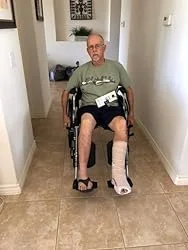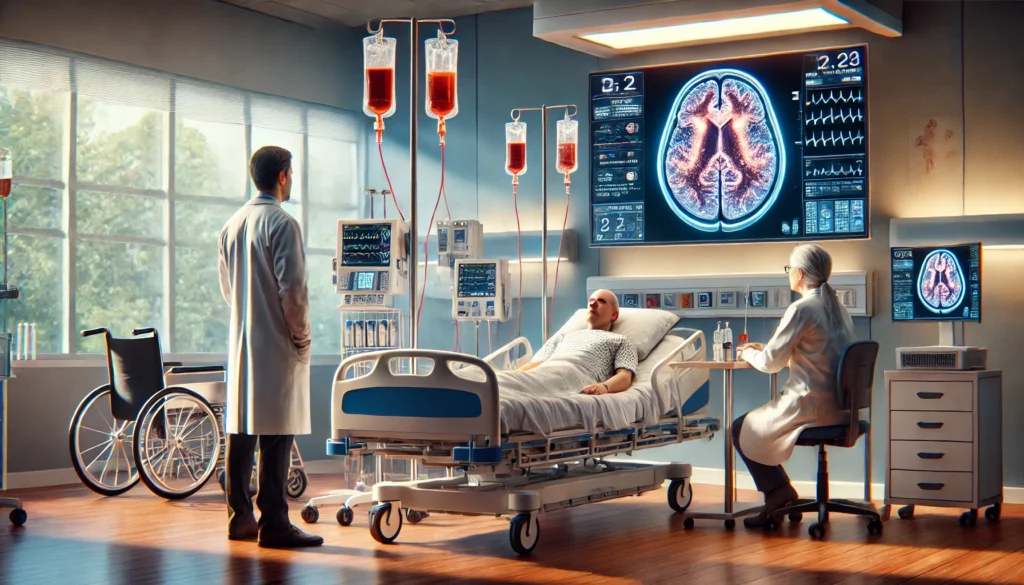Dallas, Texas: Leading the Way in Stroke Care

When it comes to stroke management, Dallas, Texas, stands out. It’s a city where innovation, skilled professionals, and strong community resources come together. A stroke is an emergency that can change life in an instant, with potential lasting effects. Fortunately, with timely knowledge, planning, and swift action, outcomes can improve significantly. This guide covers ways to reduce risk, steps to take when every second matters, available treatment options, and strategies for recovery afterward. Whether experiencing a stroke, assisting someone who is, or preparing in advance, this information provides practical guidance for navigating such critical events.
Stroke Prevention: The First Line of Defense
Taking steps early is always smarter than dealing with problems later—especially with something this serious. Around here, we’ve got some great local support and programs aimed at helping folks reduce their risk. These include:
Public Awareness Campaigns: Groups such as American Heart Association (AHA) and local hospitals in Dallas frequently organize events, workshops, and seminars to educate communities about prevention. Topics often cover managing high blood pressure, controlling cholesterol, maintaining a nutritious diet, staying active, and quitting smoking.
Getting Access to Primary Services: Around here, there are plenty of clinics and local providers that focus on staying ahead of problems. When you go in for regular check-ups, it helps spot and manage things like high blood pressure, diabetes, or even atrial fibrillation—an irregular heartbeat that can lead to serious trouble if left unchecked. Keeping tabs on those early can make a big difference.
Community Wellness Programs: Many local groups offer free or low-cost screenings, fitness classes, and nutrition guidance to encourage healthier living. For example, Dallas County Health and Human Services provides resources for managing chronic conditions that raise risk.
Telehealth Services: In recent years, virtual care has changed how people take charge of their well-being. Now, individuals can connect with medical professionals from a distance, making it easier to track their condition and get tailored guidance on lowering risks.
Emergency Response: The Golden Hour
When this medical emergency occurs, every second matters. Early hours are often called “golden hour,” as swift action can greatly improve recovery. Local emergency teams coordinate efficiently to provide rapid and effective response.
911 and EMS Services: If someone shows signs of a stroke, calling 911 immediately is essential. Emergency responders are trained to assess the situation, provide urgent treatment, and transport the individual to the nearest specialized hospital for advanced intervention.
Certified Hospitals for Neurological Emergencies: Dallas is home to several hospitals with specialized stroke care units, including Parkland Hospital, Baylor University Medical Center, and UT Southwestern Medical Center. These facilities are equipped with advanced imaging technology, neurologists, and stroke teams ready to provide life-saving treatments such as thrombolysis (clot-busting medication) and endovascular procedures.
Mobile Units: Some hospitals use specialized ambulances equipped with CT scanners and telemedicine tools. These units allow doctors to diagnose and begin treatment before patients arrive at a hospital, saving critical time.
Advanced Treatment Solutions for You
Once a patient reaches a hospital, focus shifts to stabilizing condition and minimizing potential brain injury. Medical teams use a variety of advanced methods, including:
Thrombolysis: For ischemic, the drug alteplase (tPA) can dissolve blood clots and restore blood flow to the brain. However, this treatment must be administered within a few hours of symptom onset.
Mechanical Thrombectomy: When clot-busting medication isn’t effective, doctors may perform a mechanical thrombectomy. This minimally invasive procedure uses a catheter to remove clots from blocked vessels.
Surgical Interventions: For brain bleeds, surgery may be necessary to repair ruptured vessels or relieve pressure. Specialists in the area are highly trained in managing these complex procedures.
Comprehensive Centers: Facilities like UT Southwestern and Baylor Scott & White provide 24/7 access to specialists, advanced imaging equipment, and critical units designed for patients in serious condition.

Rehabilitation and Recovery: Building a New Normal
Recovery can be a long and challenging journey, but there are plenty of resources available to support both patients and their families. Rehabilitation often involves a multidisciplinary approach, including:
Inpatient Rehabilitation: Many hospitals have inpatient rehab units where patients receive intensive therapy to regain lost skills. This may include physical, occupational, and speech therapy, along with psychological counseling.
Outpatient Programs: For patients who no longer need to stay in the hospital, outpatient rehab programs offer continued therapy and assistance. These programs are typically customized to fit each individual’s specific needs and recovery goals.
Support Groups: Those who have experienced it, along with their caregivers, can find comfort and guidance by connecting with others who have faced similar challenges. Various organizations provide support groups, educational workshops, and social gatherings to foster community and shared understanding.
Assistive Technology: Advances in technology have opened up new possibilities for healing. Many rehab centers now utilize tools like robotic exoskeletons, virtual reality systems, and brain-computer interfaces to help individuals regain mobility and independence.
Role of Research and Innovation
Dallas is at the forefront of groundbreaking research, thanks to leading institutions like UT Southwestern and Baylor Scott & White. These centers push boundaries daily, exploring innovative studies aimed at preventing issues, improving treatment, and enhancing recovery. Key focus areas include:
Genetics and Stroke Risk: Researchers study how genetic factors influence risk, opening doors for personalized prevention strategies.
Neuroprotective Therapies: Scientists investigate medications and techniques that shield brain cells from damage during events.
Rehabilitation Techniques: New methods, such as non-invasive brain stimulation and stem cell therapy, are being tested to improve recovery and function.
Telemedicine: Studies examine how telemedicine can expand access to medical services, especially for rural or underserved populations.
Challenges and Opportunities in Assisting Those Affected
Though strides have been made in improving support, challenges still remain, including:
Access Gaps: Some communities, including low-income groups and minorities, face higher risks and limited access to essential resources. Ongoing outreach programs and community collaborations aim to reduce these gaps.
Awareness and Education: Many still fail to recognize warning signs or understand urgency for immediate action. Public education campaigns remain essential.
Cost of Recovery: Regaining independence after a major illness or injury can be expensive, especially when insurance coverage falls short. Local providers are working to make recovery and rehabilitation services more affordable and accessible for everyone.
Specialized stroke care services for children in Dallas
Specialized support is available for young patients dealing with neurological emergencies. While these situations are rare in children, they can arise from conditions like congenital heart defects, sickle cell disease, or trauma. Top medical centers offer thorough treatment, with teams of pediatric neurologists, rehabilitation experts, and child life specialists working together to guide the recovery process. Early intervention and tailored rehab programs are essential, helping kids rebuild their strength and improve their quality of life.
Financial assistance programs
Recovering from a serious condition can be expensive, but several financial programs exist to ease the burden:
Hospital Financial Programs: Facilities like Parkland offer reduced-cost or no-cost services for qualifying low-income patients.
Stroke Organization Resources: Groups such as American Stroke Association provide guidance on grants, scholarships, and financial aid for survivors.
Nonprofit Assistance: Foundations and networks often assist with medical bills, rehabilitation fees, and adaptive equipment.
Government Programs: Programs like Medicaid and Medicare may cover related costs for eligible individuals. Consulting hospital social workers or financial counselors can clarify available options.
Mental health support for survivors
Many survivors face challenges such as depression, anxiety, and persistent fatigue. Various resources exist to guide and encourage individuals through recovery:
Counseling Services: Hospitals like Baylor Scott & White and UT Southwestern include mental and emotional guidance as part of rehab programs. Staff provide access to counseling sessions, ensuring survivors have someone to talk to during recovery.
Peer Groups: Organizations such as American Heart Association host gatherings where survivors can share experiences, exchange insights, and gain encouragement.
Neuropsychologists: Local specialists assist patients in managing cognitive and emotional changes that can follow a serious medical event.
Community Programs: Nonprofits and community centers offer workshops and therapy sessions focused on mental wellness, overall recovery, and guidance for caregivers.
How do individuals assist others, and what local resources are available to offer help?
Caregivers play a vital role during recovery, offering practical, emotional, and daily assistance. Several resources exist to guide and strengthen them:
Training Programs: Hospitals and rehab centers provide courses on handling daily tasks, managing medications, and recognizing early warning signs of complications.
Respite Services: Local organizations offer temporary relief, allowing caregivers a break while ensuring loved ones continue receiving attentive care.
Peer Groups: Community centers, nonprofits, and hospitals host gatherings where caregivers can share experiences, exchange advice, and connect with others facing similar challenges.
Educational Workshops: Sessions on stress management, financial planning, and navigating medical processes offer useful strategies and guidance for day-to-day caregiving responsibilities.
Conclusion: A Community Dedicated to Excellence
This city prioritizes comprehensive care, offering top-tier resources for prevention, emergency response, treatment, and rehabilitation. However, the work is never done. Continued research, community involvement, and a focus on equitable access remain essential in improving outcomes for everyone.
If you or someone close is at risk, acting early can make a real difference. Learn to spot warning signs, adopt healthier habits, and connect with available guidance. These steps can reduce impact and support a return to independence.
Keep in mind, every moment matters. Quick action can change outcomes and create a path toward recovery.
Related posts:
- Gettin’ Back Yer Voice: Tacklin’ Aphasia After a Stroke
- What Happens in the Final Stages After a Stroke?
- Best Leg Exercises for Stroke Recovery
- Signs & Effects of a Right-Side Stroke Explained
- Stroke Recovery: How to Walk Again with Confidence
- Returning to Work After a Stroke: Know Your Rights
- How Does Smoking Cause a Stroke?
- Stroke Finger Exercises: Regain Hand Strength and Dexterity
- Can Eating Eggs Prevent a Stroke? The Surprising Truth
- In-Home Care Costs for Seniors: A Complete Guide